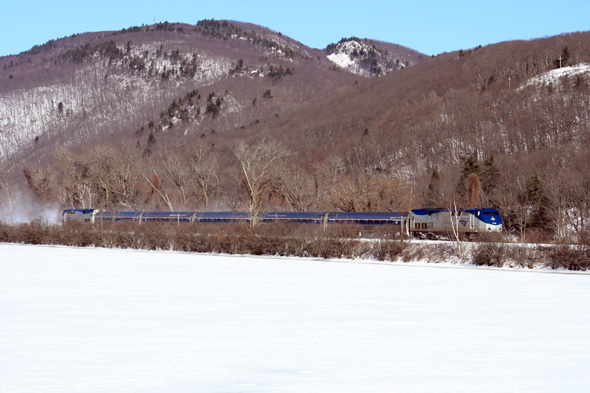 |
| The roof of my just completed boxcar #151 is seen with the weathering mix applied. The two rear cars are the same style cars without the mix. |
"It was a take-off on the alcohol over dullcote effect. I dullcoted the car’s factory-painted roof which came painted silver to make it appear galvanized. Not wanting just a dull silver roof (duh) I decided to try giving the roof (keeping it off the sides) a bath in the old Sellios stand-by, alcohol/India ink mixture. The effect provided by the alcohol is enhanced by the blacks and grays that come with the India ink being a part of the process...Kip"
 |
| Kip's Rutland Ry boxcar roof is very impressive...more so in person. |
 |
| Kip Grant's Erie boxcar roofing looks great also. These two views inspired me to try this technique. |
What I did...
Using Kip's lead I began by applying a coat of Floquil flat finish (you can also use Testors Dullcote) then about a half hour later added a brushed on coat of India ink-alcohol mix. I used a top brand India ink (Higgins) along with a dollar store bottle of 70% alcohol. I don't recall how many drops I added to the full bottle of alcohol but it was at least a dozen or maybe 15 drops. What I did was add a few drops of ink to the bottle then applied a bit to a piece of stripwood...applying more drops to darken the mix and applying it once again to the stripwood. I think it took 3-4 attempts till I got a colour I liked. It does not need to be all that dark to complete the affect. As an experiment I thought I would give the mix a try on a silver roof without flat finish. It did not add any affect to the final appearance...so the flat finish or Dullcote is the base one needs...thanks Kip...George Dutka

















































